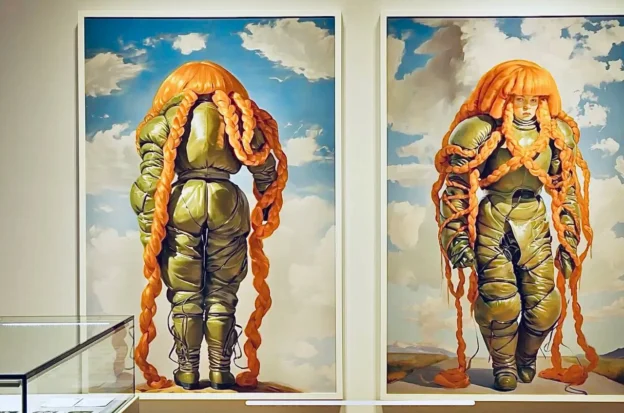Your cart is currently empty!

Grimes’ AI-Generated Artwork: A New Era for Creativity and Controversy
The Dawn of AI Art at Christie’s
In a groundbreaking event, Canadian musician and artist Grimes recently captured global attention by selling her AI-generated artwork, “Marie Antoinette After the Singularity,” at Christie’s inaugural auction dedicated solely to AI-generated art. This unprecedented sale marked a critical milestone, merging cutting-edge technology with the prestigious world of traditional art.
Artistic Innovation Meets Historical Narrative
Working collaboratively with her brother Mac Boucher, Grimes employed state-of-the-art AI platforms such as DALL·E, Midjourney, and Stable Diffusion to craft an intricate and thought-provoking piece. The tapestry merges Rococo-style opulence with futuristic visuals, highlighting the intricate relationship between historic extravagance and contemporary technological progress.
A Provocative Concept: “Rococo Basilisk”
The title “Marie Antoinette After the Singularity” creatively references “Roko’s Basilisk,” a philosophical thought experiment imagining an AI capable of retroactively judging human actions. Grimes’ depiction of a cyborg Marie Antoinette embodies this idea, confronting viewers with ethical concerns and existential questions posed by humanity’s pursuit of technological supremacy.
Market Reception: Success or Shortfall?
Initially estimated to fetch between $30,000 and $60,000, the tapestry sold for $25,200. Although slightly under projections, this transaction highlights the increasing fascination and cautious curiosity surrounding AI-generated artwork. The mixed outcomes of the auction reflect both optimism and uncertainty about AI’s future impact on the traditional art market.
Ethical Debates Surrounding AI and Creativity
This pioneering auction stirred considerable controversy within the art community. More than 6,400 artists petitioned against the sale, voicing concerns over intellectual property rights and the ethical ramifications of AI models trained on copyrighted content without explicit consent. These protests underscore crucial ongoing discussions about authenticity, artistic ownership, and the ethical boundaries of creative technology.
Grimes: Bridging Music, Art, and Technology
Grimes has consistently blurred the lines between music, visual arts, and technological innovation. Renowned for her exploratory approach, her recent forays into AI-generated art and NFTs further solidify her role as a leading figure in contemporary digital creativity. The tapestry serves as yet another compelling example of her visionary artistic exploration.
Conclusion: Navigating the Future of AI in Art
The sale of Grimes’ tapestry at Christie’s represents a watershed moment in art’s ongoing evolution, eliciting both excitement and thoughtful consideration about the role of artificial intelligence. As the art world continues to integrate and experiment with AI technology, including in fields like documentary photography, addressing ethical challenges and fostering responsible creativity will remain essential to sustaining innovation and integrity in artistic expression.
Recommend0 recommendationsPublished in Art History, Uncategorized
Leave a Reply